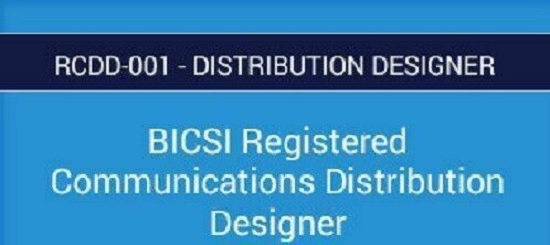Table of Contents
- Examining the Different Skills and Responsibilities of an Registered Communications Distribution Designer
- Understanding the Different Types of Systems an Registered Communications Distribution Designer Can Design
- How to Become an Registered Communications Distribution Designer
- Examining How an Registered Communications Distribution Designer Manages Projects and Time
A Registered Communications Distribution Designer (RCDD) is a professional in the telecommunications industry who designs, integrates, and maintains voice, data, audio, video, and security systems. The RCDD is a critical part of any telecommunications project and is responsible for making sure that all systems are installed and functioning correctly. They are knowledgeable in the installation and operation of cabling and associated cabling systems, as well as the standards and regulations that govern these systems. RCDDs must also be familiar with the latest technologies and be able to design systems that meet the customer’s needs.
Explaining the Role of an Registered Communications Distribution Designer
An Registered Communications Distribution Designer (RCDD) is an individual who is responsible for designing, integrating, and managing telecommunications and data communications systems. RCDDs are highly trained professionals who specialize in the planning, design, integration, and management of telecommunications and data communication systems such as voice, data, audio, video, security, and automation systems. RCDDs typically begin by taking inventory of the existing telecommunications and data communication systems within a particular environment.
This includes evaluating the current infrastructure, equipment, and usage requirements for each system. Using this information, RCDDs develop plans for a new or updated system that meets the current and future requirements of the organization. These plans involve the use of diagrams and drawings to illustrate the layout of the system, as well as specifications for the components and accessories needed to make the new system operational. RCDDs are also responsible for selecting and testing the appropriate components and devices for the system.
This includes selecting the most cost-effective and reliable components and ensuring that the components are compatible with one another. In addition, RCDDs must ensure that the system is properly installed and configured to meet the organization’s needs. After the system is installed, RCDDs must continuously monitor and maintain the system to ensure that it is functioning properly. This includes troubleshooting any problems that arise and taking corrective action to ensure that the system is operating at optimal performance. In short, RCDDs are responsible for the design, integration, and management of telecommunications and data communications systems. They are highly trained professionals who have the expertise to plan, design, install, and maintain the most cost-effective and reliable systems.
Examining the Different Skills and Responsibilities of an Registered Communications Distribution Designer
An Registered Communications Distribution Designer (RCDD) is a professional who is responsible for the design, integration, and implementation of a wide range of information technology systems. The RCDD is an expert in the development of telecommunications systems, including voice, video, data, security, and audio-visual systems. The RCDD is responsible for the planning, designing, and supervising the installation of all the telecommunications systems in a building or facility. This includes the selection of the appropriate equipment and components for the installation, as well as the installation itself. The RCDD must also be able to coordinate with other professionals, such as engineers, architects, and electricians, to ensure that the installation is completed properly and efficiently.
Particular Facility Or Organization
An RCDD must also be able to analyze the needs of a particular facility or organization and come up with a design that meets those needs. This includes creating a plan for the installation of the equipment and components, as well as the design of the wiring and cabling systems. The RCDD must also have the ability to troubleshoot technical issues and make adjustments to the system as needed. The RCDD is also responsible for ensuring that the telecommunications systems are regularly maintained and updated. This includes monitoring and testing the performance of the systems, as well as training users on the use of the equipment and components.
Provide Technical Advice
The RCDD must also be able to provide technical advice to those who are responsible for managing the systems, as well as providing customer service when needed. In addition to designing and implementing telecommunications systems, an RCDD must also possess a variety of other skills. This includes the ability to understand and interpret customer requirements, as well as the ability to work with various hardware and software platforms.
Additionally, the RCDD must also possess strong communication skills, as well as the ability to manage projects and budgets. Overall, an RCDD is a highly-skilled professional who is responsible for the design, installation, and maintenance of a wide range of telecommunications systems. The RCDD must possess a variety of technical and communication skills, as well as the ability to work with a variety of hardware and software platforms. Additionally, the RCDD must also have the ability to analyze customer requirements and create a design that meets those needs.
Understanding the Different Types of Systems an Registered Communications Distribution Designer Can Design
A Registered Communications Distribution Designer (RCDD) is a specialized professional who is certified by BICSI, an international association that provides information and resources for the design, installation, and integration of information technology systems. RCDDs are responsible for the planning, design, and implementation of telecommunications and other low-voltage infrastructure systems. They are knowledgeable in the principles of building design, electronics and telecommunications, cabling systems, and audio/visual systems. RCDDs are skilled in designing systems for a variety of applications.
What They Contain?
These systems may include traditional telephone systems, computer networks, data centers, audio/visual systems, and security systems. RCDDs are knowledgeable in the various types of cabling, such as fiber optic, coaxial, and twisted pair, and can design systems that are tailored to the specific needs of each client. RCDDs can design systems for a variety of applications, such as voice, video, data, and security. They are knowledgeable in the various technologies used in these systems, such as IP, VoIP, Ethernet, and wireless.
RCDDs are also experienced in designing systems that are compliant with applicable codes and standards. Such as National Electric Code (NEC), Telecommunications Industry Association (TIA) and Building Industry Consulting Service International (BICSI) standards. When designing a system, RCDDs consider the client’s needs, budget, and the space available. They are experienced in selecting the right components and designing systems that are efficient and cost-effective. They are knowledgeable in the latest technologies and can recommend solutions that are tailored to the client’s specific needs.
RCDDs also provide expert advice and guidance on the installation and maintenance of the designed systems. They have extensive knowledge in installation and testing of telecommunications cabling, and are experienced in troubleshooting and resolving technical issues. In conclusion, a Registered Communications Distribution Designer is a highly specialized professional who is certified by BICSI. They are knowledgeable in the principles of building design, electronics and telecommunications, cabling systems, and audio/visual systems. They are experienced in designing systems for a variety of applications, such as voice, video, data, and security. And are capable of providing expert advice and guidance on the installation and maintenance of the designed systems.

How to Become an Registered Communications Distribution Designer
Becoming a Registered Communications Distribution Designer (RCDD) requires a combination of formal education, industry experience and passing a certification exam. First, you need to obtain a formal education, such as a bachelor’s degree in electrical engineering, telecommunications, computer engineering or a related field. During your studies, you should gain a thorough understanding of industry standards, infrastructure and technologies, as well as the integration of multiple systems. You should also gain substantial experience in the industry. The more experience you have, the better your chances of becoming an RCDD.
This experience should be in the design, installation and maintenance of communications distribution systems and related technologies. You should also familiarize yourself with the standards and best practices of the industry. Once you have the educational and professional requirements, you can apply for the RCDD certification. This exam is offered by the Building Industry Consulting Service International (BICSI) and tests your knowledge of the industry. Including design, installation and maintenance of communications systems.
You must pass this exam in order to become an RCDD. After you have passed the RCDD exam, you will be eligible to become an RCDD. Many employers require this certification for positions related to the design, installation and maintenance of communications systems. Becoming an RCDD requires dedication and hard work. The combination of formal education, industry experience and passing the certification exam will help you reach your goal of becoming an RCDD. With the right qualifications and knowledge, you can reach your goal of becoming a Registered Communications Distribution Designer.
Examining How an Registered Communications Distribution Designer Manages Projects and Time
An Registered Communications Distribution Designer (RCDD) is someone who is certified to design, implement, and manage various types of communication systems. These systems can include security systems, data networks, audio-visual systems, and more. As such, an RCDD must be proficient in project management and time management in order to meet deadlines and ensure the success of their projects. Project management is a key skill for an RCDD. This includes the ability to work with stakeholders, evaluate systems, develop and implement designs, and create and manage project plans.
An RCDD must be able to effectively assess project goals, identify resources needed, develop a timeline, and track progress. They must also be able to form and maintain relationships with vendors, contractors, and other stakeholders. Time management is also an important skill for an RCDD. They must be able to prioritize tasks based on the importance and urgency. And create a schedule that allows them to complete tasks efficiently and on time. In addition, they must be able to accurately estimate the amount of time needed for a particular task.
They must also be able to recognize when tasks can be delegated or outsourced in order to meet deadlines. Overall, an RCDD must be adept at both project management and time management in order to successfully complete projects. They must be able to assess project goals, create and manage project plans, prioritize tasks. And accurately estimate the amount of time needed for tasks. In addition, they must be able to form and maintain relationships with vendors, contractors, and other stakeholders. With these skills, an RCDD can ensure the success of their projects and meet deadlines.
Conclusion
A Registered Communications Distribution Designer (RCDD) is a highly specialized professional who designs, plans, and implements efficient communication networks. They are responsible for designing, installing, and maintaining the physical infrastructure of an organization’s telecommunications system. RCDDs must have a thorough understanding of the latest technologies, standards. And procedures in order to create reliable, cost-effective systems that meet the specific needs of an organization. Through their expertise and experience, RCDDs are a vital part of any organization’s success.
